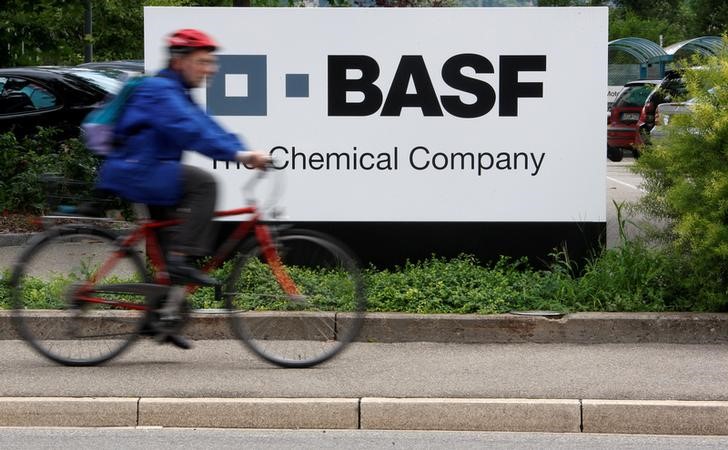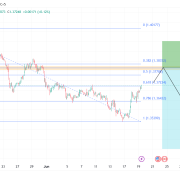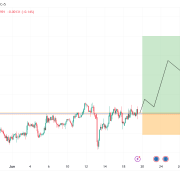
Popular Incorporated (BPOP) reported a mixed financial performance in its third-quarter earnings call, with CEO Ignacio Alvarez announcing a net income of $155 million, down $23 million from the previous quarter. Despite the decline, which was primarily due to a higher provision for credit losses, the bank saw a rise in net interest income and significant loan growth. The company also revised its Return on Tangible Common Equity (ROTCE) target for the fourth quarter of 2025, aiming for at least 12% instead of the previously projected 14%.
Key Takeaways
Net income fell to $155 million, a $23 million decrease from the previous quarter.
Net interest income rose by $4 million, with net interest margin increasing to 3.24%.
Operating expenses decreased to $467 million, and 600,000 shares were repurchased for about $59 million.
Significant loan growth of $603 million was noted, primarily in commercial lending.
The CET1 capital ratio was strong at 16.4%, with tangible book value per share at $69.04.
Management revised the ROTCE target for Q4 2025 to at least 12%, down from 14%.
Credit quality remained stable, but consumer loan delinquencies, especially in auto loans, increased.
The bank is focusing on sustainable net interest income growth and expects to provide guidance for 2025 in January.
Company Outlook
Popular anticipates a consolidated loan growth of around 1% in Q4 2023.
The bank forecasts a year-over-year growth in net interest income of 6% to 7% for 2024.
Management remains focused on achieving a long-term sustainable ROTCE of 14%.
Bearish Highlights
Deposit levels at BPPR dropped by $1.8 billion.
The provision for credit losses increased, with a $73 million provision in the current quarter.
ROTCE for the quarter decreased to 10%, down from 11.8% in the previous quarter.
Bullish Highlights
The tourism sector in Puerto Rico showed resilience with a 5% increase in passenger traffic.
The bank experienced strong loan growth, especially in commercial lending.
Management expressed optimism about business transformation and customer experience improvements.
Misses
The company missed its net interest income target due to seasonal upticks in expenses.
There was a slight increase in net charge-offs, totaling $59 million for the quarter.
Q&A Highlights
Management emphasized that net interest income is the primary driver of profitability.
No large outflows of public funds are anticipated in Q4.
The bank maintains a neutral interest rate position and is actively managing its investment portfolio.
Management is optimistic about potential tailwinds through 2026 due to loan growth.
Popular Incorporated remains cautious but optimistic as it navigates the evolving economic environment. The bank’s management team is committed to achieving sustainable growth and profitability, with a focus on net interest income and credit quality. Further guidance on the company’s outlook is expected to be provided in January.
InvestingPro Insights
Popular Incorporated’s (BPOP) recent financial performance, as discussed in the earnings call, can be further contextualized with some key metrics from InvestingPro. Despite the reported decrease in net income, BPOP’s market capitalization stands at $6.47 billion, reflecting investor confidence in the bank’s overall position.
The company’s P/E ratio of 12.48 suggests that the stock may be undervalued compared to industry peers, which aligns with the bank’s focus on sustainable growth and profitability. This valuation metric becomes particularly interesting when considering the InvestingPro Tip that BPOP “has raised its dividend for 5 consecutive years,” indicating a commitment to shareholder returns even in challenging times.
Another relevant InvestingPro Tip highlights that BPOP “has maintained dividend payments for 10 consecutive years.” This consistency in dividend payments, coupled with a current dividend yield of 2.76%, may appeal to income-focused investors, especially given the bank’s strong CET1 capital ratio of 16.4% mentioned in the earnings report.
The bank’s revenue for the last twelve months as of Q2 2024 was $2.6 billion, with an impressive operating income margin of 30.05%. This solid operational performance supports management’s optimism about potential tailwinds through 2026 due to loan growth, as discussed in the Q&A highlights.
It’s worth noting that while the stock has experienced a significant 52.68% price total return over the past year, it has recently taken a hit, with a -11.38% return in the last week. This recent dip could present an opportunity for investors who believe in the bank’s long-term strategy and its ability to navigate the current economic challenges.
For readers interested in a more comprehensive analysis, InvestingPro offers 8 additional tips and metrics that could provide deeper insights into BPOP’s financial health and market position.
Full transcript – Popular Inc (NASDAQ:BPOP) Q3 2024:
Operator: Hello and welcome to the Popular Incorporated Third Quarter Earnings Call. My name is Elliot and I will be coordinating your call today. [Operator Instructions]. I would now like to hand over to Paul Cardillo, Investor Relations Officer at Popular. Please go ahead.
Paul Cardillo: Good morning and thank you for joining us. With us on the call today is our CEO, Ignacio Alvarez; our President and COO, Javier Ferrer; our CFO, Jorge Garcia; and our CRO, Lidio Soriano. They will review our results for the third quarter and then answer your questions. Other members of our management team will also be available during the Q&A session. Before we begin, I would like to remind you that on today’s call, we may make forward-looking statements regarding Popular, such as projections of revenue, earnings, expenses, taxes and capital structure as well as statements regarding Popular’s plans and objectives. These statements are based on management’s current expectations and are subject to risks and uncertainties. Factors that could cause actual results to differ materially from these forward-looking statements are set forth within today’s earnings release and our SEC filings. You may find today’s press release and our SEC filings on our web page at popular.com. I will now turn the call over to our CEO, Ignacio Alvarez.
Ignacio Alvarez: Good morning and thank you for joining the call. In the third quarter, we achieved net income of $155 million, a decrease of $23 million from the second quarter. These results were primarily driven by a higher provision for credit losses, which was partly a result of loan growth at BPPR. Credit quality trends remained stable in the period. Net interest income increased by $4 million compared to the second quarter. While this was below what we had anticipated, it was largely a result of a $1.8 billion reduction in deposit levels at BPPR, which impacted the balance and mix of earning assets. That said, average retail customer deposit balances remain approximately 30% above prepanemic levels and we continue to add new deposit clients during the quarter. Going forward, we expect to continue to benefit from the repricing of our investment portfolio and loan originations. We achieved strong loan growth in the quarter, with balances increasing by $603 million or nearly 2%. BPPR’s loan portfolio grew by $583 million primarily in the commercial segment, but reflecting growth across almost all lending categories. Popular Bank saw a $21 million increase in loan balances driven by commercial loans. Our net interest margin expanded by two basis points to 3.24%, mainly driven by higher average loan balances and the repricing of loans and reinvestment of securities in a higher interest rate environment. This was partially offset by higher deposit costs and a lower average balance of investment securities. Operating expenses decreased by $2 million to $467 million. During the quarter, we repurchased 600,000 of our shares for approximately $59 million. We continue to believe that our shares are attractive to repurchase at current prices. Tangible book value per share increased by 10% to $69.04 and driven by lower unrealized losses in our investment portfolio. Please turn to Slide 4. Business activity in Puerto Rico remains solid as reflected in the favorable trends in total employment, consumer spending and other economic data. Consumer spending remained healthy. Combined credit and debit card sales for BPPR customers increased by approximately 4% compared to the third quarter of 2023. Our auto loan and lease balances increased by $105 million compared to the second quarter as demand for new cars continue to be strong in Puerto Rico. Mortgage loan balances at BPPR increased by $104 million in the third quarter, driven primarily by home purchase activity and our existing strategy of retaining FHA loans in portfolio. The tourism and hospitality sector continues to be a source of strength for the local economy. Passenger traffic at the San Juan International Airport increased by 5% in the third quarter compared to the third quarter of 2023 and hotel occupancy continues to be healthy. There is a significant amount of committed federal funds that have yet to be disbursed. Disbursement of these funds will continue to support economic activities for several years. We remain optimistic about the future of our primary market and are well positioned to support our clients during the coming years. On that note, I turn the call over to Jorge for more details on our financial results.
Jorge Garcia: Thank you, Ignacio. Good morning and thank you all for joining the call today. Please turn to Slide 5. As Ignacio stated, we reported net income of $155 million in the third quarter, $23 million lower than the prior period’s results. Net interest income increased by $4 million. This increase was below what we had expected. The lower NII was driven primarily by an anticipated decrease in deposits in Puerto Rico, which impacted the balance of higher-yielding tax-exempt T-bills in our investment portfolio. Ending customer deposit balances at BPPR excluding Puerto Rico public deposits decreased by $856 million in ending balances and by approximately $1 billion in average balances during the quarter, primarily in low-cost interest-bearing deposit accounts. From the beginning of March and through most of the second quarter, retail deposit balances in BPPR benefited from tax refunds of more than $1.2 billion. During Q3, in addition to continued outflows of deposit balances driven by rate-seeking behavior among our commercial and affluent retail deposit customers. We also saw a significant increase in spending and use of these balances across our retail client base, reversing the increase in average deposit balances we saw in Q2. At quarter’s end, average retail deposit balances at BPPR are still approximately 30% higher than pre-pandemic levels, down from a peak of roughly 50% that we saw in Q2 2022. At the end of the third quarter, Puerto Rico public deposits were $18.7 billion, down $1 billion compared to Q2 and slightly above the upper end of our year-end guidance range. Average public deposit balances were higher during the quarter as the bulk of the reduction occurred on the last day of the quarter. Going forward, we expect public deposits to be in a range of $17 billion to $19 billion. While we do not anticipate this level of contraction on our deposit balances, the benefits of investment repricing, stable nonpublic deposit costs and loan growth in the quarter contributed to a $4 million increase in net interest income despite the reduction in the investment portfolio. Our net interest margin expanded by two basis points on a GAAP basis, driven by loan growth and by the repricing of loans and securities. NIM on a tax equivalent basis, contracted by one basis point, primarily resulting from lower balances of tax-exempt securities and higher levels of disallowed deposit expense. Loan growth was solid, increasing by $603 million in the quarter, driven by activity at BPPR, where we saw increases across nearly all categories, led by commercial, lending, auto and mortgage originations. Noninterest income was $164 million, a decrease of $2 million from Q2, driven primarily by lower income from mortgage banking activities as a result of a decrease in the fair value of MSRs. We continue to expect noninterest income to be approximately $160 million, $165 million in Q4. We are pleased to see that credit metrics remain stable during the third quarter. The provision for credit losses of $71 million, although $25 million higher than the second quarter, increased in part due to loan growth during the quarter in addition to charge-off activity in the consumer loan portfolio. Total operating expenses were $467 million or $2 million lower than last quarter, driven by lower professional fees and reserves for operational losses, offset in part by higher technology costs related to our transformation efforts and higher personnel expenses due to annual merit increases. We expect total full year expenses of approximately $1.91 billion, within the range of our original 2024 guidance of $1.89 billion to $1.95 billion. Our effective tax rate was 22% compared to 19% in the prior quarter, driven by the lower tax-exempt income. We now expect an effective tax rate for the year of 23% at the top end of our prior guidance range of 21% to 23%. Please turn to Slide 6. During the quarter, we began to reinvest investment maturities in three to three year US treasury notes, buying approximately $1.1 billion at an average yield of 3.75%. We expect to continue this strategy as a way to hedge against lower rates. In BPPR, deposit costs increased by six basis points to 1.89%. The deposit costs at BPPR continued to be impacted by the proportion of public deposits to total deposits. As discussed last quarter, approximately $800 million of low-cost government-related accounts managed by our Fiduciary Services Group were repriced during the last month of the second quarter to market-linked rates. The full effect of that adjustment is reflected in our Q3 deposit cost run rate and margin. At Popular Bank, deposit cost decreased by eight basis points during the quarter. This change reflects a reduction in the cost of intercompany deposits. The underlying economic activity and demand for credit in Puerto Rico remains strong. In our US markets, we have begun to see a pickup in the demand for credit. As a result, we now expect consolidated loan growth in the fourth quarter of approximately 1%. This will result in total loan growth in 2024 of approximately 4% within the original 3% to 6% guidance range for the year. We anticipate fourth quarter NII will increase by approximately 1.5% to 2% compared to Q3, driven by continued reinvestment of securities and loan originations coupled with the beginning of the repricing of Puerto Rico public deposits and online deposits at Popular Bank. This will result in a year-over-year growth in 2024 NII of approximately 6% to 7% below our previous 8% to 10% guidance. Additionally, we expect NIM expansion to reaccelerate in Q4 and continue into 2025. Our deposit mix and our ability to reduce the cost of deposits in the US and the volume and cost of public deposits in Puerto Rico will continue to present the biggest risk to achieving the expected level of expansion in NIM. Please turn to Slide 7. Regulatory capital levels remain strong. Our CET1 ratio of 16.4% decreased by six basis points from Q2, mainly due to an increase in risk-weighted assets. Tangible book value per share at the end of the quarter was $69.4, an increase of $6.33 per share from Q2, mostly resulting from the decreased AOCI and our quarterly net income offset in part by dividends and stock repurchase activity during the quarter. During the last two months of the quarter, as part of the previously announced common stock repurchase authorization, we repurchased approximately 600,000 shares for roughly $59 million or an average price of about $98 per share. Return on tangible common equity for the quarter was 10%, a reduction from the 11.8% last quarter driven by the higher provision expense and higher effective tax rate. As we look forward to 2025, given a variety of drivers, including the impact of the reduction in deposit balances experienced this year, the mix shift to higher cost deposits along with the limited loan growth year-to-date in the US, we no longer expect to achieve our target of 14% ROTCE by the end of Q4 2025. We now anticipate that we should be able to generate at least a 12% ROTCE in the fourth quarter of 2025. Longer term, we as a management team continue to be focused on achieving a sustainable 14% return on tangible common equity. We are confident that our transformation efforts, the repricing of our investment portfolio and loan demand in all of our markets will be important catalyst to achieve this target over time. With that, I turn the call over to Lidio.
Lidio Soriano: Thank you, Jorge, and good morning. Credit quality metrics remained stable during the third quarter. The corporation’s mortgage and commercial portfolios continue to reflect credit metrics significantly below pre-pandemic levels. Consumer portfolios reflected increased delinquencies and net charge-offs driven by the auto loan portfolio. Delinquencies and net charge-offs in this portfolio have gradually increased, but remained slightly below predanemic levels. We are closely monitoring changes in the macroeconomic environment and on borrower performance, given higher interest rates and inflationary pressures. We believe that the improvements over recent years in risk management practices and the risk profile of the corporation, loans portfolio positions Popular to continue to operate successfully under the current environment. Turning to Slide number 8. Nonperforming assets and nonperforming loans increased during the quarter driven by Popular Bank. NPLs in Popular Bank increased by $18 million related to higher mortgage NPLs by $17 million impacted by a single loan that re-enter NPL status after becoming current in the second quarter. NPLs in BPPR increased by $2 million mainly driven by a $9 million increase in auto, partially offset by a $6 million reduction in mortgage and a $2 million reduction in commercial. OREOs in BPPR decreased by $7 million, driven by sales of residential real estate properties. Inflows of NPLs decreased by $7 million. In BPPR, the decrease was driven by mortgage. In Popular Bank, the $19 million reduction in commercial was offset in part by the $17 million mortgage loan that we enter NPL status. It is important to note that this residential property is well located as a loan-to-value below 50% and that we have no additional lending exposure to this client. The ratio of NPLs to total loans held in portfolio remained flat at 1%. Turning to Slide number 9. Net charge-offs amounted to $59 million or annualized 65 basis points of average loans held in portfolio compared to $54 million or 61 basis points in the prior quarter. Net charge-offs in BPPR increased by $5 million, driven by higher consumer by $9 million offset in part by lower commercial and construction by $3 million. In Popular Bank, net charge-offs remained flat quarter-over-quarter. Given the credit performance in the first three quarters of the year and our outlook for the fourth quarter, we expect net charge-offs for the full year at the low end of our initial guidance of 65 to 85 basis points. Please turn to Slide number 10. The allowance for credit losses increased by $14 million to $744 million. In BPPR, the ACL increased by $23 million mainly due to a combination of growth in the commercial portfolios and changes in credit quality trends in the auto and credit cards portfolio. In Popular Bank, the ACL decreased by $8 million, mainly driven by lower reserves in the commercial and construction portfolios due to improvements in risk ratings. The cooperation ratio of ACL to loans held in portfolio was 2.06% versus 2.05% in the prior quarter. The ratio of the ACL to NPLs was 206% compared to 214% as in the previous quarter. The provision for credit losses was $73 million compared to $44 million in the prior quarter, reflecting higher balances, higher losses and changes in credit quality. In BPPR, the provision was $77 million compared to $49 million, while in Popular Bank, the provision was a benefit of $4 million, similar to the prior quarter. To summarize, credit quality metrics remained stable during the third quarter. We are attentive to the evolving environment, but remain encouraged by the performance of our loan book. With that, I would like to turn the call over to Ignacio for his concluding remarks. Thank you.
Ignacio Alvarez: Thank you, Lidio, and Jorge for your updates. While the increase in revenues was lower than we anticipated, the underlying drivers of our business continue to be favorable. As demonstrated by the progression of net interest income and margin, loan growth and stable credit trends. We are making headway in our business transformation with meaningful progress in modernizing our customer channels and improving the customer experience. We have streamlined the process of rolling out updates to our various customer-facing applications. For example, our consumer digital banking application in Puerto Rico has improved the time to production of releases by 30% over the past two years. Additionally, we are increasing the personalization of our offering to provide customers the right solution at the right time and to the right channel to deepen our relationships with them. I am optimistic about our prospects for the remainder of the year and beyond. Business trends in Puerto Rico continue to be positive and we are well positioned to participate in the economic activity that is expected to be generated in the coming years. We are now ready to answer your questions.
Operator: Thank you. [Operator Instructions] Our first question comes from Brett Rabatin with Hovde Group. Your line is open. Please go ahead.
Brett Rabatin: Hey, guys. Good morning. Wanted to start with the deposit trends on the retail side that you’ve discussed in your prepared commentary. Was there just a maybe not an all of a sudden move, but was there just a concerted move this quarter with maybe some activity. Can you talk a little bit more about what happened with how high net worth retail and clients were moving deposits, et cetera, and just trying to get a sense of where you think that might go from here.
Jorge Garcia: Sure, Brett. So when we look back last seven or eight quarters, what we have seen is a pretty consistent trend, focused on our high net worth and corporate clients looking for yield enhancement. We’ve seen a lot of movement into our popular security subsidiary. It’s pretty normal. This is consistent with what we have seen in the US. It’s a restrictive monetary policy. People will move. What was new during this quarter and we have said SIBI money wakes up. We did see a little bit of an acceleration of more money moving out and into those higher-yielding assets. But what surprised us was the level of expenditure across our retail network. As I mentioned in my prepared remarks, from the period of March through June, our retail clients received roughly $1.2 billion in refunds from their tax refunds in Puerto Rico. That was about $200 million more than last year. Traditionally, that money stays longer and it circulates within our client base and structure. We did not see that. There’s nothing to pinpoint. I think there when we look at the market, there’s nothing to pinpoint of deposit moving within the banking system. It’s really moving out. Expenditures, we have seen an increase in our debit card purchases, increases in the payment levels on credit cards. It’s just the aggregate impact of everything. As we look through, as I mentioned, we have our average balances are about 30% higher than prepanemic levels. We certainly would not expect at this stage, people to go back to those levels. Obviously, a passage of time, people are making more money in Puerto Rico et cetera. But we’ve tried to kind of size what do we think is at risk. It’s very hard when you’re talking about the broad-based retail network, you’re talking over 1.7 million clients, you’re talking about people’s psychology, what they’re doing. These are a little bit unprecedented times in terms of the amount of stimulus that Puerto Ricans have received through the pandemic and beyond. But we do believe our best estimate right now is that maybe there is still risk of somewhere in the $600 million to $800 million in our deposit base. But in terms of timing or ability we are not sure. But we are very focused on this. The one other thing I would say, I mean, obviously, the NII, we’ve talked about NII being a catalyst of our growth, both in terms of achieving our goals for this year and for next year. That hasn’t changed. I mean in terms of the dynamic, the repricing of the investment portfolio continues, loan origination and the repricing of our portfolio also continues. When we look at, not ready to give you guidance for 2025. We will do that in more detail in January on our call. But I think at this stage, we would expect that at least in 2025, we would see that same level of growth of 7% or so that we are seeing this year in 2024. But we’ll give you more information in January when we are — have a little more visibility and we see how the fourth quarter trends and our clients behave.
Brett Rabatin: Okay. That’s really helpful. And then wanted to dive a little further into the expense growth guidance, specifically for the fourth quarter, with the full year at $1.91 billion, which would intimate about $45 million of growth in the fourth quarter. Can you guys maybe talk about that? Is there some consulting going on into the end of the year? And I know you’re probably not ready to give guidance for ’25, but any early thoughts on how the fourth quarter levels might matriculate into next year?
Jorge Garcia: Yes, Brett, we need to make sure that when we give the guidance of the $1.91 billion, it’s on a GAAP basis. I just want to make sure that you’re looking at, yeah, there’s some FDIC-related costs and I think we had some — the late penalties on the taxes in the first quarter. I think those two are I think they combined to maybe like $22 million, $23 million. So I think the target probably — closer to $5 million to $30 million range rather than the $45 million that you mentioned. It’s still an increase and to your question, yes, it is related in part to the efforts of transformation, professional fees, consulting-related expenses as well as seasonal expenses that occur every year towards the end of the year, local holiday spending, promotions, donations and different things that if you look at our historical, the fourth quarter always tends to have an uptick in expenses. Of course, we’re conscious of controlling costs, particularly given the NII missed this quarter and we’ll do our best to control that. As far as next year, we’ll provide you that guidance in January.
Brett Rabatin: Okay. If I can just follow up on that is how much of the fourth quarter increase might be repeatable with that you could think about ’25, i.e., the year-end bonuses and Christmas?
Jorge Garcia: Yes. We’ll give you a guidance in January.
Brett Rabatin: Okay. Fair enough
Jorge Garcia: But if you can look back, you see some seasonality in our expenses.
Brett Rabatin: Okay. Fair enough. Appreciate all the color, guys.
Operator: We now turn to Frank Schiraldi with Piper Sandler. Your line is open. Please go ahead.
Frank Schiraldi: Good morning. Just wondering if you can Jorge maybe talk a little bit about the ability to reprice deposits here. What you’re seeing far given the 50 basis point cut in September, I’d imagine maybe just given some of the numbers you talk about is potentially being at risk on the deposit side, maybe makes it a little bit more difficult to reduce cost. Just wondering if you could give us an update on thoughts of deposit betas really here, I guess, in the near-term?
Jorge Garcia: Sure. So we’d like to think of that in different buckets. Let’s first talk about the public deposits in Puerto Rico. Those, as you know, are market linked to short-term indexes. We don’t disclose the indexes, but they’re short-term indexes and it’s not tied to Fed funds. We’re already seeing the benefits of that. Those are priced with a lag, but some of the short-term index are maybe moving ahead of projected or expected movement by the Fed. So we’re already seeing the benefit of that in the fourth quarter on the public deposits and we would expect that to continue. The second group is the retail and commercial network in Puerto Rico. As you know, we’ve had very low betas on the way up in Puerto Rico. We don’t expect to see a lot of opportunities to move down, particularly in the early stages of movements. So that we don’t — we would expect that to have very low betas on the way down. And then you have the US deposits. They are both the direct online channel as well as the branch network. We have had high betas in those — both of those channels. We would expect and we have already begun to see reductions in both of those deposit sources. But those are a little bit more subject to market competitive dynamics. For example, I think in the online channel, we were able to bring down our savings accounts, I think, 30 basis points versus the Fed’s move 50 basis points. We have seen competitors in this space actually increase rates in the last couple of weeks. So right now, we’re pricing to maintain deposits. We’re not pricing to grow. There is opportunity there and we’ll be very focused. That’s an area of opportunity for us. But given the competitive stand of the US franchise, any changes in liquidity in the marketplace or pricing by bigger banks or competitors could have an impact. But over time, there is an opportunity there.
Frank Schiraldi: Okay. And then just in terms of the updated, the 12% ROTCE. I think you mentioned you’re targeting now by the fourth quarter or in the fourth quarter 2025. Does that continue to not benefit from any AOCI loss? Does that continue to exclude AOCI that ROTCE target?
Jorge Garcia: That is correct. That is the same calculation.
Frank Schiraldi: Okay. And any thoughts on in terms of as you – obviously the NII reduction in NII expectations sets you back a little bit in terms of getting to a higher return on tangible common equity. But any sort of updated thoughts on that 14% bogey in terms of timing or too early to say?
Jorge Garcia: It’s early to say. I mean, I would say that, number one, as a management team, we’re still focused on that 14%. The dynamics of Popular haven’t changed in just one quarter. We still believe that the transformation efforts and management’s focus towards a determined target, albeit aspirational. It’s still there and important for us. I think it will take us longer. We’re going to have to work a lot harder to get there, but we are focused on that. In terms of the 12% ROTCE, I think the simplest way I can describe it, I look at the second quarter results and the third quarter results. We took a step back in those ROTCEs. We’re coming from a lower base. We want to get back to that growth and that level that we had anticipated before and work hard towards achieving that.
Frank Schiraldi: And if I could just sneak in one last one, just on — in the past, I think, you guys have done sort of the accelerated buyback route. And so kind of harder to get a sense. But could you — is there any — would you say there’s any seasonality to buyback activity here? Just trying to get a sense of what the quarterly run rate could look like going forward?
Jorge Garcia: So one thing I’ll make sure listeners know, we started the third quarter’s buyback in August. So really, we’re in the market for two months out of the quarter. We hope that over time, you’ll get to see a cadence of our activity. We obviously haven’t given a timeframe on that authorization, but we intend to use it, but maintain the flexibility. Like our peers, we see peers change in terms of when they’re in and out of the market, we just want to retain that flexibility. But at the end, we didn’t put an authorization just as a benchmark for you, but for us to execute upon that. NII growth will still continue to be the driver to improve ROTCE, but obviously now that we have an authorization, it should contribute to improving that return from where we’re at today.
Frank Schiraldi: Okay. All right. Great. Thank you.
Operator: Our next question comes from Kelly Motta with KBW. Your line is open. Please go ahead.
Ignacio Alvarez: Hey, Kelly.
Kelly Motta: Hey, good morning. Thanks for the question. Maybe just a housekeeping item on expenses. I appreciate that you’re guiding on a GAAP basis. Just want to clarify, does that include any OREO gains and losses in there?
Jorge Garcia: Sure. Yes, that’s part of our expense base.
Kelly Motta: Got it. And loan growth was really strong this quarter. Kind of as you look ahead, I’m interested in, I appreciate 4% for the year. As you look ahead, wondering where you’re seeing good opportunities, how you’re seeing demand on the island for loans and if you expect an acceleration in that with the rates coming down?
Ignacio Alvarez: This is Ignacio. I mean, really, the demand in Puerto Rico, as you said, has been very strong, and we we’ve been able to close a number of loans. I don’t know if I would use the word accelerate, but I think it’s going to continue to be strong. The pipeline looks good. Some of the loans are bulky. So it depends when we’ve close them and what payoffs we have, but we’re seeing good — we’re seeing good demand across the board, especially in commercial. We’re seeing a lot of interest in investment in Puerto Rico, assets continue to trade. We’re seeing people coming to the island. So we’re very confident. I mean almost across all sectors, are we seeing strong loan growth especially in the commercial area.
Jorge Garcia: And one thing I would add, Kelly, is I mean that’s Puerto Rico. In the US this year, we’ve had no — we went backwards, right? In the first two quarters, we went down. This quarter, we grew about $20 million. We are seeing a pickup in demand, credit demand in the US in particularly in construction and in community association lending in Florida, in particular. I think that’s an area where we might be able to see more acceleration certainly from the level this year. Part of that slow loan growth, it’s what’s affected our projections for next year and the change in the ROTCE guidance.
Ignacio Alvarez: I mean, the things in Puerto Rico continue to really steady growth. I mean, the numbers just came out for unemployment in September and the unemployment rate went down again from 5.7% to 5.5% and we added private sector jobs of 16,000 in the month. So that gives you a sort of a benchmark of economic activity on the Island.
Kelly Motta: Got it. That’s helpful. Maybe last one for me. I think in your prepared remarks, liquidity on the island remains high. You did have now two quarters of NIBs outflows. I’m wondering, is there any way that you’re approaching the deposit base in terms of NIBs that could continue to be at risk? And how does that factor into your revised kind of NII profitability outlook from here?
Jorge Garcia: Yes. So what I mentioned before is that looking at the average balances being around 30% higher than prepandemic and seeing the behavior that we saw in this last quarter, in particular, with our retail clients. It’s hard to predict. We think that our best guess right now, it’s — you still have $600 million to $800 million at possibly at a risk from that base. I don’t in terms of timeline or anything, we don’t have that. We certainly would expect that in the second quarter of next year. We’ll see the same cyclicality of tax refunds coming in at the same level. There’s no reason to expect that they would be significantly different or lower. It’s just whether the client behavior changes. We’re not seeing people, certainly, the affluent and corporate clients, commercial clients have been consistent over the last seven or eight quarters in improving and enhancing their excess liquidity, using it for working capital or simply going for higher yield. We’re not seeing necessarily a lot of clients in the mass affluent group moving to other banks or be competitive in terms of yield and cost. So it’s really a matter of balancing client behavior with our offerings of deposits service and being strategic with our larger relationships to make sure that we retain those deposits.
Kelly Motta: Got it. That’s helpful. I’ll step back. Thank you.
Operator: We now turn to Jared Shaw with Barclays. Your line is open. Please go ahead.
Jared Shaw: Hi. Thanks. Good morning.
Jorge Garcia: Good morning.
Jared Shaw: I guess maybe just first on the new ROTCE target. What capital level are you assuming to support that or should — are you expecting to see capital be significantly lower or potentially lower or is it still grinding higher with that base?
Jorge Garcia: Yes, Jared, I mean, I think the NII continues to be the driver of increased profitability. That doesn’t change with the change in the targets. I would, again, we have — the authorization is out. We’re executing upon that. We know that that’s a lever certainly. But we want to make sure that what we’re doing is sustainable and NII will continue to be the big driver. We haven’t given that target number. We’ll have to think about it and see if it helps in the future. But NII continues to be the driver.
Jared Shaw: Okay. And then just shifting to credit. You look at charge-off levels, they’ve been better than that longer-term normalized range, call it, 75 to 125 basis points. Is this a new good long-term level or is there a reason to think we should be we should expect to see credit costs and charge-offs migrate back up higher?
Lidio Soriano: I will say certainly that in the short-term, that will not be the case. I mean we still see strong performance by our commercial and mortgage portfolios with — actually in the mortgage portfolio, we’re seeing negative charge-offs benefits. So I mean I think in the short to medium term, probably not. In the long-term, we’ll see.
Jared Shaw: Okay. Thanks.
Operator: We now turn to Timur Braziler with Wells Fargo. Your line is open. Please go ahead.
Timur Braziler: Hi. Good morning. Just going back to the NII guidance. Tax equivalent NII declined in 3Q. The guide for fourth quarter. Is that on a tax equivalent basis or is there going to be continued movement between the adjustment in tax equivalent and the tax rate there that might change the tax equivalent expectation versus the GAAP NII expectations?
Jorge Garcia: No. The guidance is GAAP. It’s based on GAAP. One of the drivers, obviously, we had lower tax exempt income because of the lower earning assets, Timur, but with the increase in the deposit cost in Puerto Rico that just essentially makes your tax exempt portfolio less efficient. That’s why you had kind of this weird relationship between an expansion in the NIM GAAP versus the tax effective GAAP.
Timur Braziler: Okay. I mean could we extrapolate that same level of increase in the tax equivalent NII for next quarter or not?
Jorge Garcia: To be honest, I don’t think of it that way. So I’ll be giving an answer without really having looked at it. What I would say is that we are anticipating the NIM to expand. I would expect that both the GAAP NIM and the tax effected NIM to expand as well.
Timur Braziler: Okay. Thanks for that. And then just again on the deposits, any line of sight for public fund outflows in 4Q? I guess, the decline that happened in 3Q? Was there anything that maybe got pulled forward? And I guess, to what extent do you need a stable deposit base in the fourth quarter in order to achieve that fourth quarter NII guide?
Jorge Garcia: Well, let me first, we don’t have a large — in our guidance right now for the end of the year. We gave ’17 to, sorry, ’17 to ’19. We’re not anticipating anything large in the fourth quarter. We had anticipated the Q3 payoff. That was part of our — we had visibility on that and why we had not increased the range in the — when we announced in the second quarter. In the first quarter, the government does have some geo payments and other disbursements that might impact the first quarter. But right now, we’re not expecting anything large.
Timur Braziler: Okay. And then just last for me. Trying to extrapolate consumer credit trends with the fact that consumers are starting to utilize more of their liquidity. How closely correlated are those two? We’ve seen kind of consumer trough earlier in the year now starting to tick a little higher. And those delinquencies as some of that liquidity is being rolled off. Can you maybe provide us an update on where you see consumer credit peaking out here.
Lidio Soriano: Well, I mean, the way we look at the consumer, our outlook for it. I mean we have a very strong market, very strong unemployment market with, as Ignacio mentioned, unemployment at record low 5.5%. We also have consumers that still have a lot of liquidity, 30% above the liquidity that they have prior to the pandemic. So we are generally positive about the outlook for the consumer on a going-forward basis. And also with rates coming down, I think that is also going to also be helpful for some of the outstanding debt that they may have particularly in credit cards.
Timur Braziler: Great. Thanks for the question.
Operator: Our next question comes from Ben Gerlinger with Citi. Your line is open. Please go ahead.
Benjamin Gerlinger: Hey, good morning.
Jorge Garcia: Hi. Good morning, Ben.
Benjamin Gerlinger: Just wanted to clarify, in the prepared remarks, you said, if I caught it correctly, of at least 12% or should we kind of earmark it for 12%. I know it’s a bit of a modeling and backing into it. I’m just trying to make sure that we’re not expecting too low of expectations here.
Jorge Garcia: I did say at least 12%. That’s the target.
Benjamin Gerlinger: Got it. Okay. The cushion is going to blow a little bit here. But when you think about credit, I know we just touched on it here with the last question. But I know in 2Q, you made an initiative kind of calling people within the consumer book a little bit faster and doing things behind the scenes. And as we clearly showed an improvement on 2Q, 3Q seemed to show a little slippage. It’s not like you guys are the only one in the other banks in Puerto Rico seem to have a similar component. But when you go forward here, is there any color you can provide on kind of marrying the two like you just said, unemployment is lower, wages are up. We’re still seeing a little bit of slippage. Is it legacy FICO kind of working its way through the python here or just any thoughts on credit?
Jorge Garcia: I mean I think you did touch upon some of the things. We did see that deterioration in the second half of last year and we reacted by changing underwriting, collection efforts, et cetera. Some of that, as you said, take through the python, and it will take some time to get through it and clear up. It’s important that the US is also seeing strong unemployment numbers, strong consumer, and they are seeing consumer losses as well. So it’s not unique to us. We’re still well below pre-pandemic levels in some of our portfolios, particularly around delinquencies. I think where we see some of the noise in Puerto Rico, we do have some purchased portfolios that we bought from fintechs in ’21 and ’22. Those have higher losses than the Puerto Rico numbers. So that skews the number a little bit. If you want to get a sense, you can look at the losses in the consumer loan portfolio in PV and those losses are very similar. And you can kind of get a sense, I think, there’s about $100 million in that portfolio. So that impacts those numbers. And then the other is the auto loans, they do tend to be a little bit more lumpy because you do have to do the recovery of those delinquent autos and repossess them and that can be lumpy in the numbers for charge-offs. I don’t know, Lidio?
Lidio Soriano: Two things maybe to add to that. I would say, first, when we’re looking at things on a vintage basis, we see very strong performance by the recent vintages. So that is very encouraging from a going-forward basis. We also see the trends in early delinquency also very positive. So notwithstanding the current performance. We think, as we look into the future, things are heading in the right direction.
Benjamin Gerlinger: Got you. And I know you’re not going to give guidance on ’25 expenses yet, but and I also do know that you’re also doing behind the scene initiatives. Is there any of that rolling off in ’25?
Jorge Garcia: No. I mean, I think the transformation effort, it will be ongoing. As we said, we look at early on a slowdown in expense increases, not necessarily a recovery or reduction of expenses, but what we see is a lot of shifts, right? So maybe today, we’re spending money in consultants and doing work while we’re capitalizing software development. Next year, you might see reductions in consultants and then you pick up on depreciation, amortization of software, capitalized software. So it’s a trend that kind of bounces out. But this transformation effort is going to take some time. It doesn’t end in ’25.
Benjamin Gerlinger: Got it. Okay. I got it. So nothing down, but the pace of increase probably slows. Okay. Helpful. I appreciate it. Thank you.
Operator: We now turn to Gerard Cassidy with RBC. Your line is open. Please go ahead.
Gerard Cassidy: Good morning, gentlemen.
Jorge Garcia: Good morning, Gerard.
Gerard Cassidy: Can you — Jorge share with us. Jorge, can you share with us I think when I looked at your 2Q 10-Q, you guys in your asset sensitivity table indicated that you were asset sensitive that rise in rates would positively affect net interest income. And I noticed this quarter, the investment portfolio duration extended out a little bit from the second quarter. Are you currently asset-sensitive still today. And then as the second part of the question is and I’m not asking for ’25 guidance, but if the forward interest rate curve is correct and we see the short end of the curve coming down possibly the 3.5% by the end of next year. Would that be an added headwind for net interest income growth for you guys?
Jorge Garcia: So, first, and Gerard I want to say we are fairly neutral in our interest rate position, right? We measure that on a 12-month period. So I want to make sure that we highlight that. In terms of the quarter, we did start, during this quarter, we bought about $1.1 billion in two to three year treasury notes both in Puerto Rico and in the US bank to try to mitigate any or hedge against rates coming down. So we’re trying to become a little bit more liability sensitive. We expect to continue that not necessarily adding more to it, but as new notes mature, reinvesting them in that two to three year period, trying to maintain a similar level of duration for the entire portfolio. And over time that will help mitigate. Certainly, we all would like to see a normal sloping curve. That would be very helpful to us and a higher for longer environment with the loan growth that we’re seeing in Puerto Rico and certainly helps if you eventually get to reduce your funding costs. But given our position and the repricing of that investment portfolio that today is underwater against the cost of public funds, we see that, we still see a lot of tailwinds, positive tailwinds through the next few quarters, I think, through 2026 for repricing and getting a lift from where we’re at today to where those should reprice.
Gerard Cassidy: Very good. Thank you. And then just a follow-up on the credit conversation we’ve been having on this call. The credit card portfolio, Slide 24, you gave us very good detail on what’s going on with delinquencies and charge-offs. I’m curious, it seems odd that when I look at your FICO mix of originations, they steadily have increased from the pre-COVID period to where we are today. But you point out in this slide that your delinquency levels as well as your charge-offs as a percentage of the portfolio have risen above pre-COVID levels. What’s accounting for the disconnect of a high FICO score, but now you’re seeing higher charge-off and delinquency levels.
Lidio Soriano: In regards of credit cards, originations not necessarily equate with outstanding balances. So because it takes time, it takes a little bit of time for it to build up. So the originations that you’re seeing in the slide it might coincide with a very small percentage of our total balance. So that explains why notwithstanding the fact that you’re seeing improved significant improvement in FICO, you are not seeing the same level of improvement in delinquency and charge-offs.
Gerard Cassidy: I see. And would that do you have a sense of the outstandings, not the originations, but where the FICO scores sit for the outstandings as of the third quarter?
Lidio Soriano: We have that information. That is not something that we have publicly made available. We’ll think about it and maybe provide that in the future meeting.
Gerard Cassidy: Okay. Thank you.
Jorge Garcia: Gerard, I would also add, I mean, certainly, when we look at pre-pandemic, I mean, the current rate environment is fairly high, right? So I think those have some impact too. And hopefully, this is one portfolio that as rates start coming down, the borrowers should see some very quick relief in terms of the level of payments, et cetera.
Gerard Cassidy: Correct. Okay. Thank you.
Operator: [Operator Instructions] We now turn to Samuel Varga with UBS. Your line is open. Please go ahead.
Samuel Varga: Good morning. I just wanted to go back to the public deposits for a minute. Given some of the short-term rate moves, for example, like the one year treasury over the last few weeks. Is there an argument to be made that there’s going to be some headwinds to repricing them down in 4Q?
Jorge Garcia: There’s, I mean, there’s always basis risk internally. When we talk about being neutral, we talk about being neutral over a 12-month period. But bottom line that means that our assets and we have still a number of out of our assets and liabilities that we price, right? There is a difference in basis. So there’s always that risk. The risk is not always negative, right? The rates can get ahead of Fed movements and benefit. And we have assets that may be repricing based on prime versus liabilities pricing based on different indexes. So that could create some noise. So I’m always hesitant to say that it’s a headwind. There is a timing difference. I mean these are priced on a lag, so that you always have that risk that the full effect will take longer, but we’ve also tried to stagger some of our T-bills to account for some of these things. And we try to manage to that I think the issue and the hesitation is that it is a $18 billion, $19 billion portfolio. So 5, 10 basis points does make a difference there.
Samuel Varga: Yes. Thank you for that. And then just wanted to go back to you talked through the different deposit channels and sort of the repricing opportunities. It sounds like you’re happy to pay the rate to keep deposits sort of the nonpublic deposits at least flat. Is that the right way to read it or could we see you get sort of aggressive enough to drive some deposit growth in the nonpublic part of the base?
Ignacio Alvarez: This is Ignacio. I think we’d only get aggressive if we thought we were losing deposits to price competition. And I don’t think that’s the case. I mean there is some price competition from US treasuries, but we can’t raise deposit rates enough to compete with that. And in terms of regular deposits from our commercial competitors, we’re not seeing that. So we’re just seeing people either moving money to these alternative investments or spending the money. So we don’t think at this point, it would be productive to raise rates. Now we’ll be like Jorge mentioned earlier in the call, we don’t think we’re going to be able to lower rates much either because we’re starting from a low point.
Samuel Varga: Understood. Thanks for taking my question.
Operator: This concludes our Q&A. I’ll now hand back to Ignacio Alvarez, CEO, for any final remarks.
Ignacio Alvarez: Thanks again for joining us today and for your questions. We look forward to updating you on our fourth quarter results in January. Have a nice day.
Operator: Ladies and gentlemen, today’s call has now concluded. We’d like to thank you for your participation. You may now disconnect your lines.
This article was generated with the support of AI and reviewed by an editor. For more information see our T&C.












